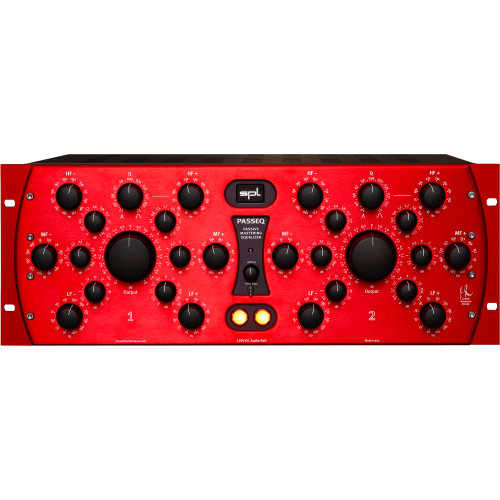Passive Mastering Equalizer
In the PASSEQ we have revived the concept of the passive equalizer that was used in the 50’s and 60’s. The charming sound of this vintage technology combined with the modern 120V technology results in a very special equalizer.
Design
A passive filter has no amplification stages. It can therefore only be lowered. If one frequency is to be boosted, all the others must be lowered. Behind the filter there is a stage that makes up for the lowered overall level. Since low noise is particularly important here, since up to 20 dB can be made up for, the 120V technology comes into its own.
The entire passive filter (variable resistor, capacitor and coil) provides a very nice sound characteristic. Besides the choice of components, the charging behaviour of the capacitors and the saturation behaviour of the coils play a major role in this. The resulting relative inertia compared to potentially very fast active filters is the reason for a pleasant, musically advantageous sound characteristic. We would choose smoothness and transparency as well as strikingly silky highs and pithy basses as a description that suits our perception.
During fine-tuning, through component selection, in countless listening sessions, the emphasis was on achieving the most musical sounding curves possible, which, for example, need fear no comparison with a Pultec EQ from the 1950/60s. Only without all the disadvantages of a 60 year old original, such as the very high background noise, but above all the very limited frequency selection.
Another highlight of the PASSEQ is the HF+ band, which has been extended by the frequencies 25 kHz and 35 kHz and sounds so incredibly good that you don’t want to switch it off.
Only one filter
All control functions are part of only one passive filter.
There are three frequency ranges:
Low Freq / Mid Freq / High Freq
Each with a cut control on the left and a boost control on the right.
In the middle is the output control.














